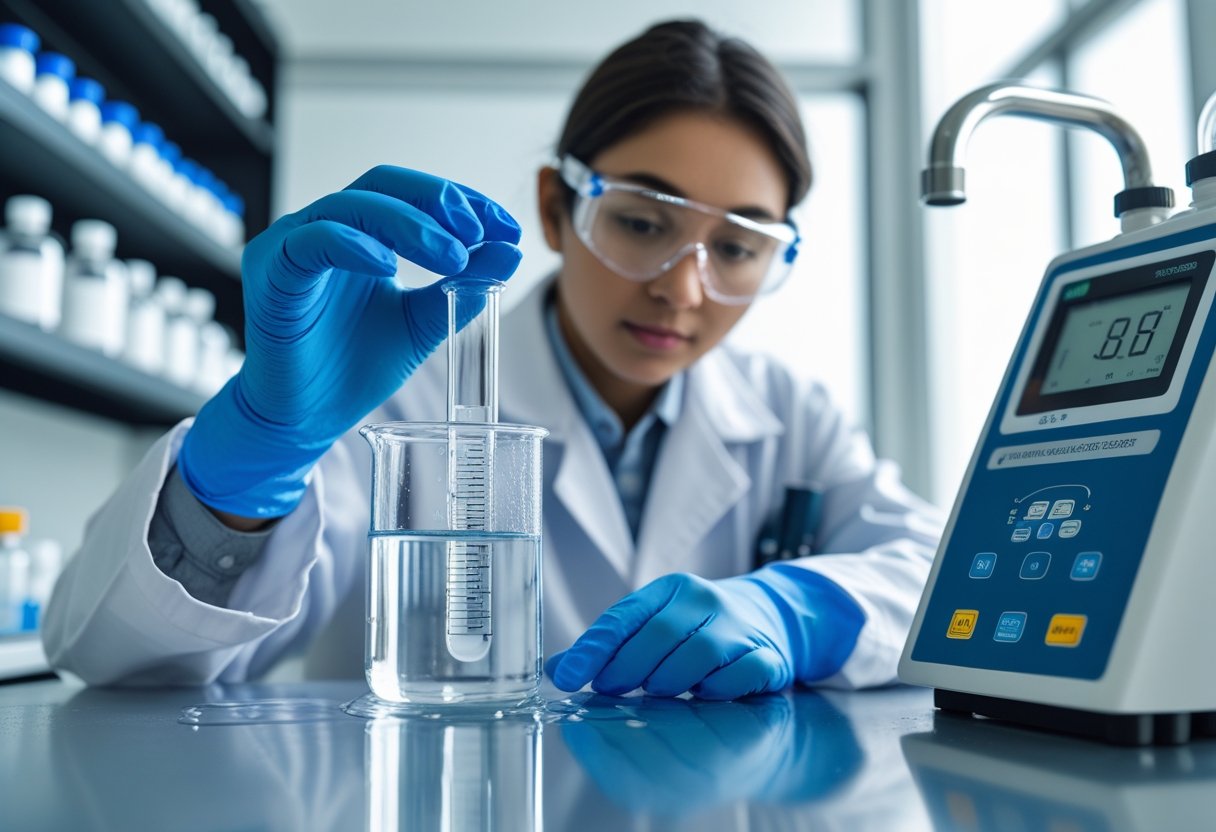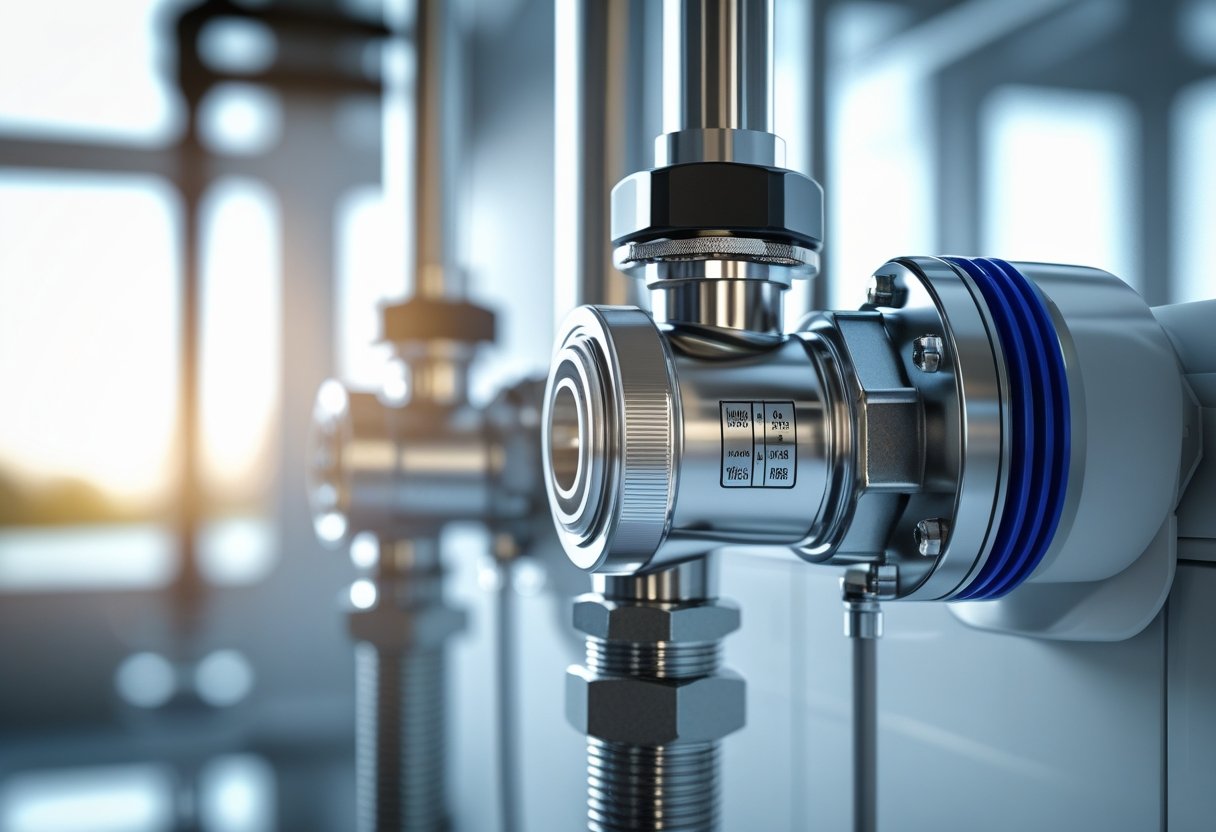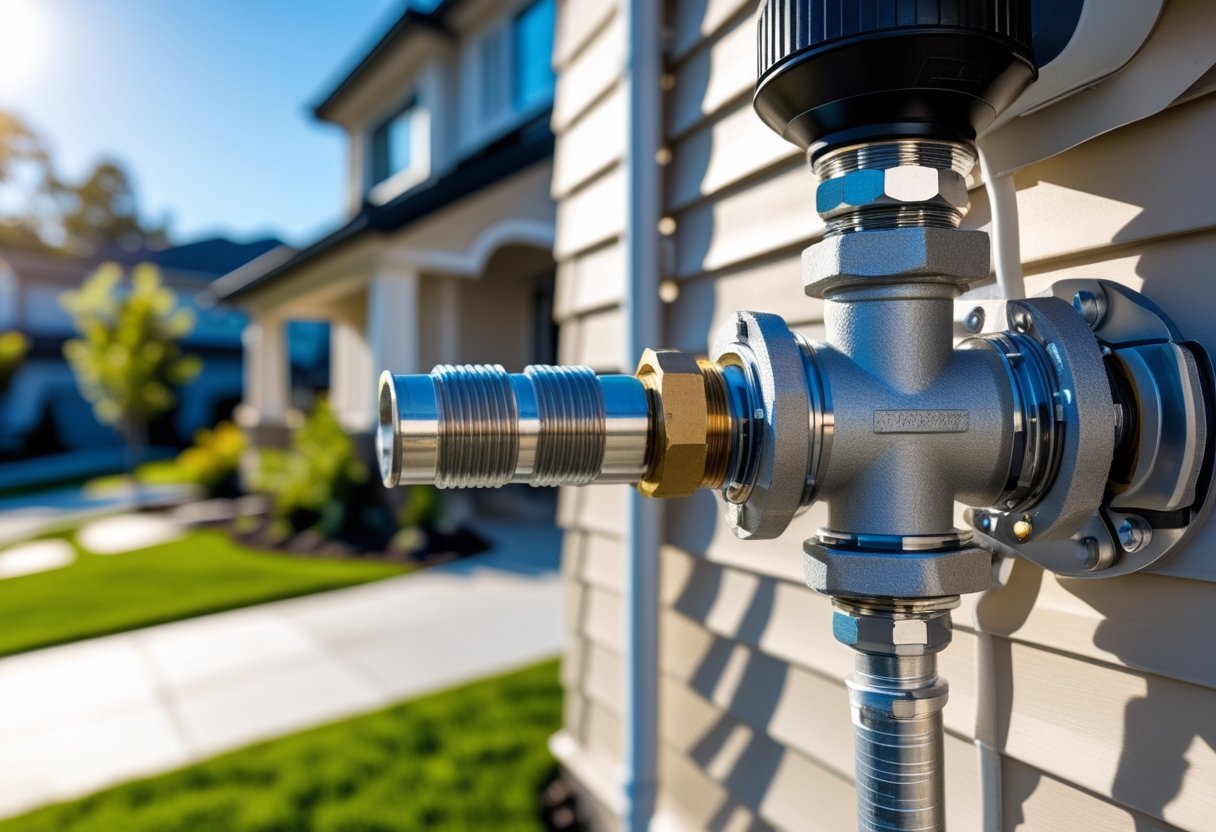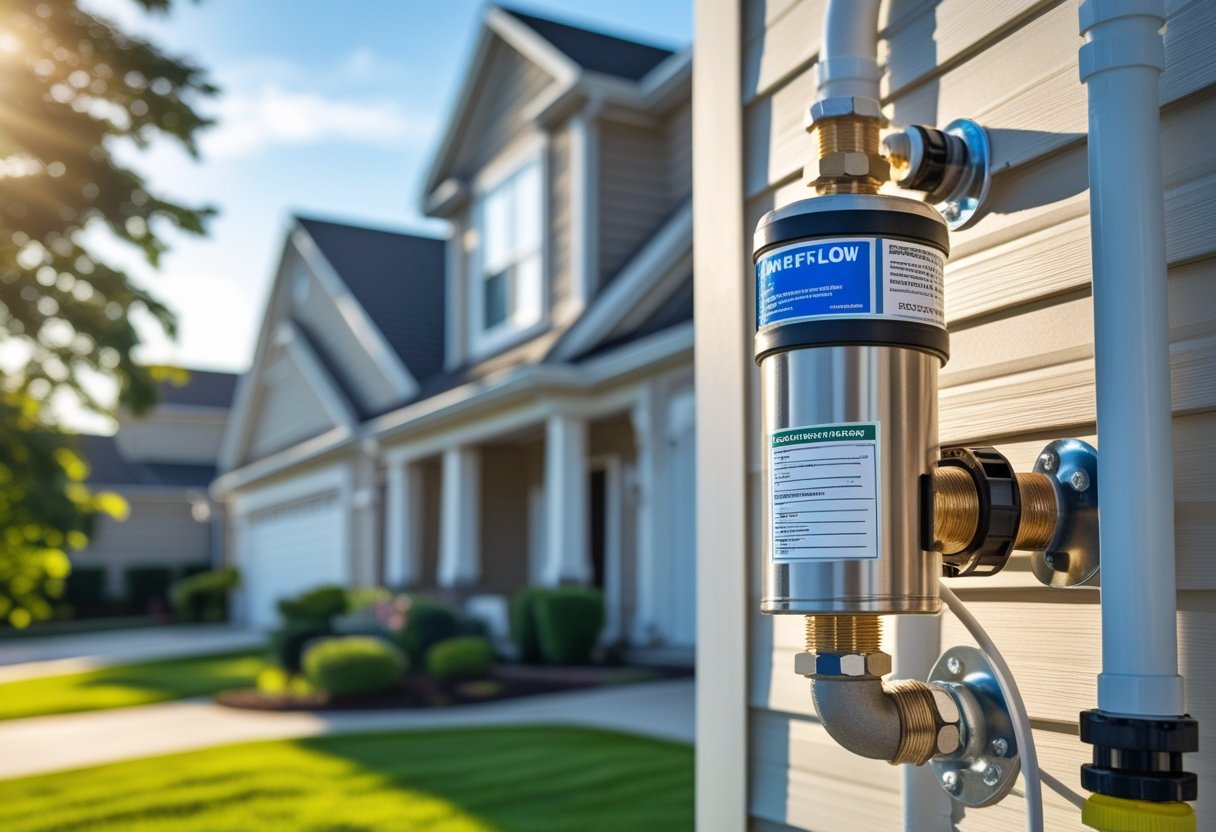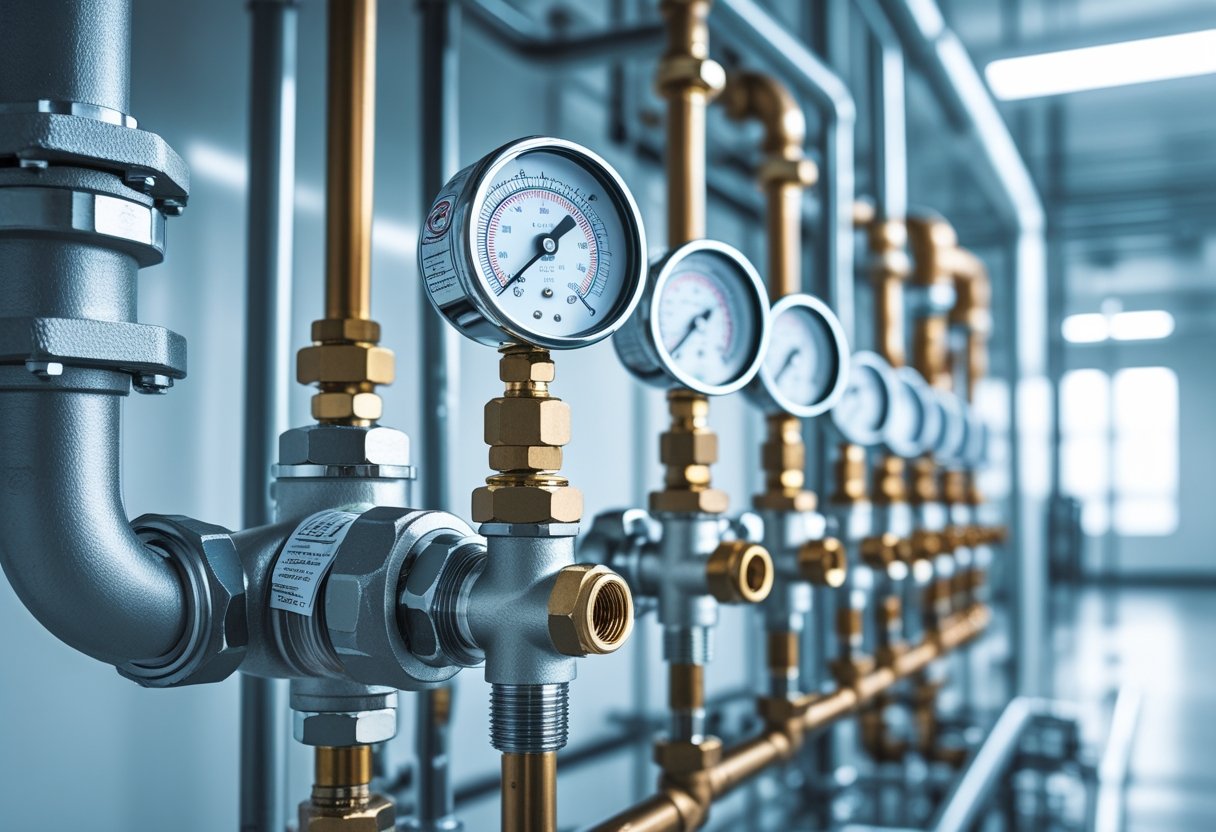Knowing how often you should test your water is key to keeping your home or business safe. For most people, annual water testing is the best way to make sure your water is clean and free from harmful contaminants.
Regular testing helps catch problems early and keeps your water supply safe.
If you have a backflow preventer or use well water, yearly checks are especially important because these systems can affect water quality. Testing every year protects your family, customers, and community by stopping dirty water from flowing back into clean supplies.
Some areas can even shut off your water if your devices aren’t tested or working properly. Staying on top of testing is simple and saves you from bigger problems later on.
Why Water Testing Frequency Matters
Testing your water regularly helps keep it safe and meets legal rules. It also protects the environment.
Knowing when and how often to test ensures your water stays clean. It also helps your system work as it should.
Health and Safety Risks
You need to test your water often to avoid health problems. Contaminants like bacteria, chemicals, or backflow from polluted sources can get into your water.
This can cause illnesses or unsafe drinking water. Annual testing is usually the minimum to catch issues before they grow.
If you have high-risk equipment, like fire sprinklers or irrigation systems, more frequent checks protect your family and community from harmful exposure. Proper backflow testing stops dirty water from going backward into your clean water supply.
This helps prevent contamination that can affect drinking water and daily use.
Legal and Regulatory Requirements
Local rules often require yearly water testing to keep your system legal. Testing off schedule can lead to fines or shutoffs.
Your water district or city usually sets specific testing timelines and report deadlines. Certified professionals handle inspections and report submissions to meet these demands.
Environmental Impacts
Testing protects the environment by keeping harmful substances out of rivers, lakes, and soil. Contaminated water can damage plants, animals, and ecosystems.
Backflow devices and regular testing prevent polluted water from leaking into natural sources. This helps preserve water quality for wildlife and future use.
When you keep your water system tested and repaired, you reduce waste and avoid costly cleanups. This helps the environment stay healthy and protects your local community’s resources.
Recommended Testing Schedules
Water testing schedules depend on the type of water source and how you use it. Some water sources need more frequent checks to keep your water safe and meet local rules.
Private Wells
If you use a private well, test your water at least once a year. This checks for bacteria, nitrates, and other contaminants that can affect your health.
You should also test after events like heavy rain, floods, or nearby construction, which can increase contamination risk. It’s important to test for bacteria like coliform and E. coli because they can cause illness.
You may also want to test for chemicals or metals if you notice changes in water taste, color, or smell. Keep a testing schedule and record results so you can track water quality over time.
If you find problems, fixing your well or water system quickly helps keep your water safe.
Public Water Supplies
Public water systems are usually tested by local water authorities. The most common requirement is annual testing of backflow prevention devices to stop contamination from irrigation or chemical use.
In some areas, more frequent checks are required if risk factors rise. You don’t need to test your water yourself if you get public water, but stay informed about the water district’s reports and any issues.
If you have your own irrigation or chemical systems, annual backflow testing keeps your water safe and follows local laws. Certified technicians handle the testing and filing reports for you.
Bottled and Commercial Water
Bottled and commercial water suppliers must follow strict testing schedules set by regulatory agencies. These schedules often require testing multiple times a year.
You don’t have to test this water yourself because it is closely monitored before sale. When buying bottled or commercial water, check the label or supplier site for information about water quality and testing history.
If you have equipment like water coolers or dispensers, clean and service them regularly to avoid contamination. If you’re running a business that sells or provides commercial water, follow all testing guidelines and maintain records.
Proper testing prevents safety issues and ensures customers get clean water every time.
What Influences Frequency of Water Testing
How often you test your water depends on several important things that affect water safety. These include changes to your plumbing, environmental risks nearby, and the climate where you live.
Paying attention to these factors helps keep your water clean and safe.
Recent Repairs or Changes
If you’ve had recent repairs or changes to your plumbing system, you should test your water more often. Repairs can loosen debris or introduce new materials that affect water quality.
For example, fixing pipes or installing new backflow preventers might cause contaminants to enter the water temporarily. After any repairs, testing within a few weeks helps catch problems early.
If you’ve replaced or added backflow devices, an immediate test confirms they work correctly. This keeps your water safe and prevents contamination in your home or building.
Nearby Chemical Spills
Chemical spills near your water source greatly affect testing frequency. If a spill happens, you should test water right away and often after until the problem clears.
Chemicals like pesticides, fuels, or industrial waste can seep into groundwater or pipes. Regular testing after a spill keeps you informed about contamination risk.
Depending on the spill's size and type, testing might be weekly or monthly until results return to safe levels. Staying on top of this protects your health and your community’s water supply.
Local Climate Conditions
The weather and climate where you live also play a role. Heavy rains or floods can push dirt, bacteria, and chemicals into water sources.
Dry spells might lower water levels, concentrating pollutants. Seasonal shifts can change water quality, too.
If you live in a place with frequent storms or drought, testing more often helps catch these changes. For example, testing quarterly or after extreme weather events keeps your water safe through varying conditions.
This is especially important if your system is near natural water sources.
Types of Water Tests To Consider
To keep your water safe, check for different kinds of problems. Testing covers things like germs, chemicals, and physical changes in the water.
Each type of test looks for specific issues that could affect your health or the taste and clarity of your water.
Microbial Contaminant Testing
Microbial testing checks for harmful bacteria, viruses, or parasites in your water, like E. coli or coliform bacteria. These germs can cause stomach illness or infections if you drink or use contaminated water.
You should especially test for microbes if you have well water or notice cloudy water or strange smells. Testing helps spot contamination early so you can avoid health risks.
Tests usually involve collecting water samples and sending them to a lab. Many home test kits also check for common bacteria.
If microbes are found, you’ll need to treat the water or find the contamination source.
Chemical Contaminant Testing
Chemical testing looks for harmful substances like pesticides, heavy metals (lead, arsenic), or industrial chemicals. These can cause long-term health problems if levels are too high.
You should test for chemicals if you live near farms, factories, or old plumbing systems. Some chemicals don’t affect taste or smell, so testing is the only way to find them.
Common chemical tests include nitrate, fluoride, lead, and chlorine levels. Your test results will show if any chemicals are above safe limits.
If so, you may need filters or other solutions to keep your water clean.
Physical Property Testing
Physical testing checks water’s color, taste, odor, temperature, and clarity. These are signs of water quality but don’t always detect harmful contaminants.
If you notice your water has a weird smell, tastes funny, is cloudy, or changes color, physical testing can help confirm the issue. It’s a simple way to catch problems early before more serious tests are needed.
You can use home kits or call a professional for this kind of testing. If physical issues are found, it might point to contamination or plumbing system problems that need to be fixed.
Seasonal and Situational Testing Needs
Water safety testing isn’t just a yearly task. Certain events and seasons increase the risk of contamination, so testing at the right times helps keep your water clean.
Knowing when to test helps you protect your home and meet local rules.
Testing After Floods or Storms
Heavy rains and flooding can cause dirt, chemicals, and germs to enter your water supply. After a flood or big storm, you should test your water right away.
This checks for bacteria and other harmful substances that might have washed into your system. If your area floods often, testing becomes even more important.
You might see changes in taste, smell, or cloudiness in your water—that’s a sign to get it tested. Prompt testing after storms helps prevent health risks from contaminated water.
It also lets you fix problems before they cause bigger issues in your plumbing or appliances.
Routine Seasonal Checks
Seasonal testing keeps your water safe all year long. Many properties follow a regular schedule, often testing once a year during spring or summer when higher temperatures can affect water quality.
In some places, local laws or water districts require annual tests between certain months, like April to September. During these months, the chance for backflow or contamination rises, so testing is key.
If you use irrigation or have fire systems, you might need extra checks to prevent any backflow from contaminating your drinking water. Routine seasonal testing helps catch problems early and makes sure your system stays compliant with local rules.
Signs That Immediate Testing Is Needed
Sometimes problems show up in your water that mean it needs testing right away. Changes in taste, smell, or color can be clues.
If people in your home get sick without another clear reason, testing should happen soon. Knowing what to watch for can protect your health.
Changes in Taste, Smell, or Color
If your water suddenly tastes strange, smells bad, or looks different, it’s a warning sign. Common changes include a metallic taste, a bleach or chemical smell, or cloudiness.
These often mean harmful substances might be in your water. Look for:
- Color changes: Brown, red, or yellow water can come from rust or sediment.
- Unusual smells: A rotten egg smell may suggest sulfur bacteria.
- Odd taste: Bitter or salty flavors can indicate contamination.
If you notice any of these, don’t wait. Testing helps find the cause fast to keep your water safe.
Unexplained Illnesses
If you or others using the water have stomach pain, diarrhea, nausea, or other sudden illnesses, your water might be unsafe.
These symptoms can come from bacteria, viruses, or chemicals in the water. Pay attention when:
- Several people in the home get sick at the same time.
- Symptoms appear soon after drinking or using tap water.
- Illness keeps coming back with no other clear cause.
In these cases, testing the water immediately is important to identify and remove the problem. It protects your family’s health and peace of mind.
How to Establish a Water Testing Schedule
To keep your water safe, set up a regular testing schedule. Most local rules require water safety tests at least once a year.
Check with your local water authority or service provider for specific testing requirements. Think about your water source and how you use it.
If you have a commercial property or handle food, you might need tests more often. Homes with well water should watch for changes in taste, smell, or appearance and test more frequently if needed.
Create a simple calendar to track your tests. Mark the date of your last test and when the next one is due.
Set reminders so you don’t forget. If a test shows problems, plan repairs and follow-up checks quickly.
Here's an easy checklist to guide you:
- Check local regulations for testing frequency
- Schedule annual tests at a minimum
- Test more often if water quality changes or for high-risk sites
- Keep records of all test reports for easy reference
- Arrange timely repairs if tests reveal issues
You can work with certified technicians who handle the testing for you. They inspect your backflow preventers, submit reports, and help you stay compliant.
You won’t have to worry about missing important deadlines or paperwork.
Working With Certified Laboratories
When you need to test your water for safety, choose a certified laboratory. Certified labs follow strict guidelines to ensure accurate and reliable results.
This helps you know the true condition of your water. Always select a lab that is approved by your local water authority.
They use proper tools and methods to test for bacteria, chemicals, and other contaminants. This gives you confidence that your water meets safety standards.
Here are some benefits of using certified labs:
- Accurate results you can trust
- Reports that meet local and state regulations
- Faster testing times through expert handling
- Clear documentation for your records
Collect water samples according to the lab’s instructions and send them in. Some labs offer pickup services or onsite testing.
If you test regularly, such as once a year, you can catch problems early. This protects your family and property from unsafe water.
Certified labs also help with backflow preventer testing if needed. You get proof of compliance, which keeps your water service safe and legal.
Next Steps After Test Results
Once you get your water test results, compare them to safety standards. If everything looks good, keep following your regular testing schedule.
If your results show any contaminants above safe limits, act quickly. Schedule a more detailed test or contact a professional to help fix the problem.
For backflow preventers, annual testing is key. If your device fails, arrange for repairs or replacement right away to keep your water safe and meet local rules.
Here are some things you can do if issues come up:
- Request repairs from a certified technician
- Install a new backflow preventer if yours is old or damaged
- Protect your device with a durable security cage to avoid tampering or theft
- Keep an emergency contact handy for quick service if you face sudden leaks
A trusted company like Pacific Backflow can submit your results to the water authority. This keeps you compliant.
Resources for Ongoing Water Safety
Regular backflow testing helps keep your water supply safe. Most cities, including San Diego County, require annual testing.
Certified technicians can provide fast, hassle-free testing. They handle the paperwork and keep your system compliant with local rules.
If your backflow preventer needs repairs or replacement, professionals can install new, code-approved devices. This stops leaks and keeps your water clean.
Some tips to keep your device safe:
- Use custom cages to protect against theft or vandalism
- Schedule emergency services if you spot leaks or damage
- Keep detailed records of all inspections and repairs
Here’s how a typical service works:
StepWhat HappensYour Part 1You send your test noticesEmail, fax, mail, or upload2Inspection and testing by prosProvide access if needed3Reports filed with cityReceive copies and stay compliant
At Pacific Backflow, we’ve served San Diego for over 40 years. We care about your water safety and make it easy to follow the rules.
You’ll get expert service with a friendly team ready to help.
Frequently Asked Questions
Water testing keeps your drinking supply safe. Knowing when and how to test helps you avoid problems from contaminants.
What intervals does the EPA advise for well water testing?
The EPA recommends testing well water at least once a year for bacteria, nitrates, and other contaminants. Test after any plumbing work or nearby chemical spills.
How can I test my water quality at home if I don't have a kit?
Without a kit, look for signs like unusual taste, color, or smell. Boiling water before use helps kill bacteria temporarily, but it’s best to get an actual test for safety.
Where's the nearest place I can get my well water tested?
Local health departments, water districts, or certified laboratories often provide well water testing. Contact your county’s environmental health office for more info.
Are there any options for free water testing available through the EPA?
Sometimes the EPA or local agencies offer free or low-cost testing programs, especially if contamination is suspected. Check with your regional EPA office or health department to see if such options exist near you.
How frequently should I check the quality of my water for safety reasons?
Test your water at least once a year and anytime you notice changes in taste, smell, or appearance. Regular checks help catch problems early before they affect your health.
Can you recommend a good water test kit for home use?
Choose kits that test for bacteria, lead, pesticides, and nitrates. Safe Home and Watersafe offer easy-to-use kits with clear instructions and reliable results.

